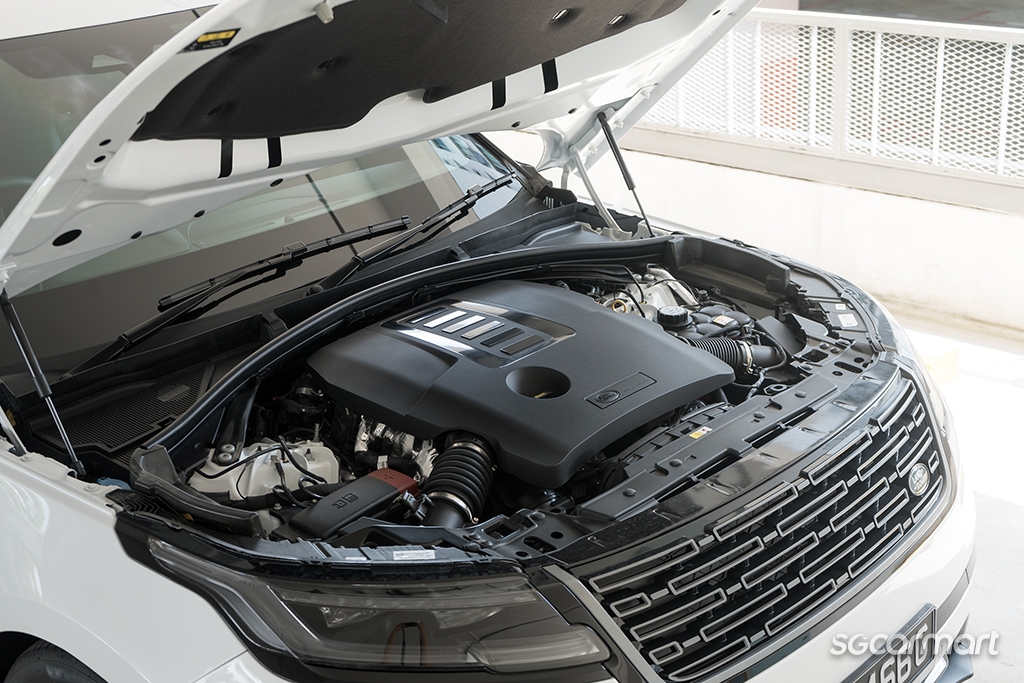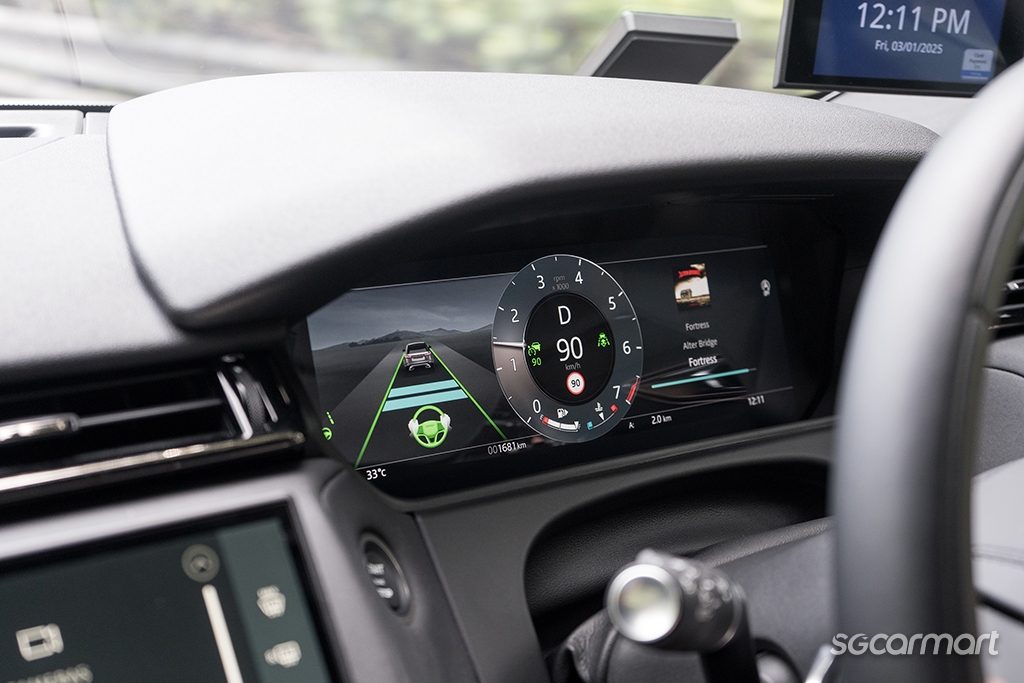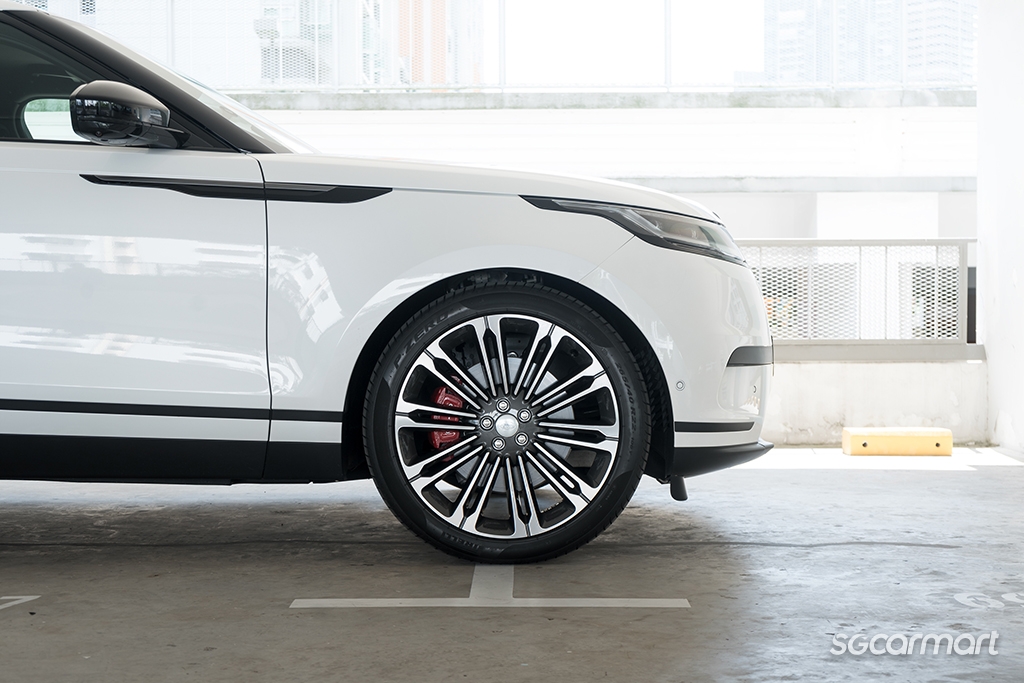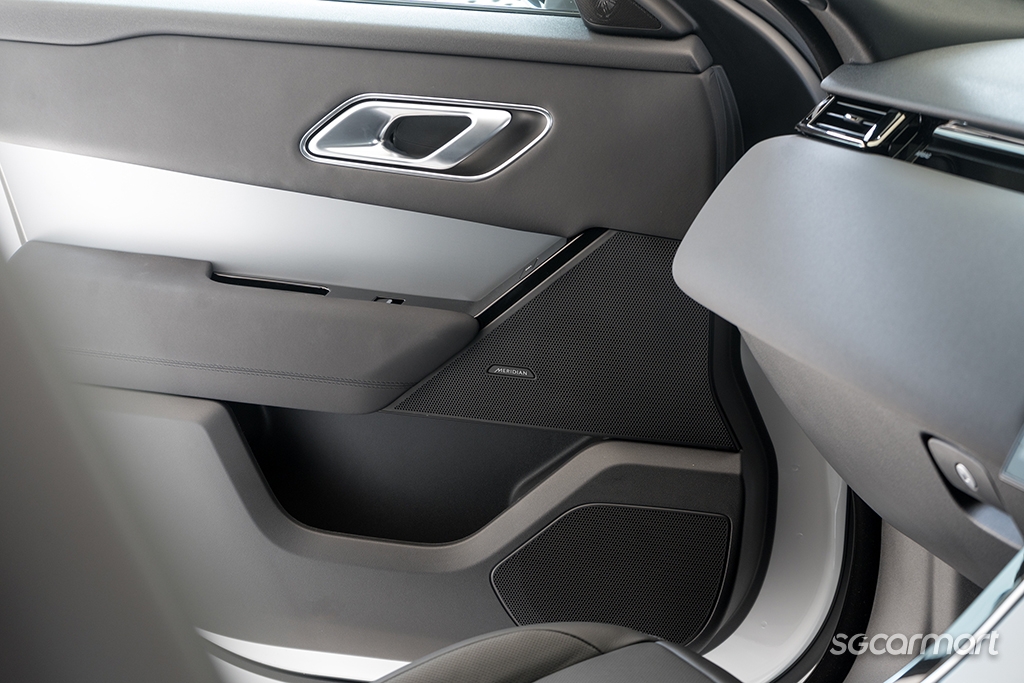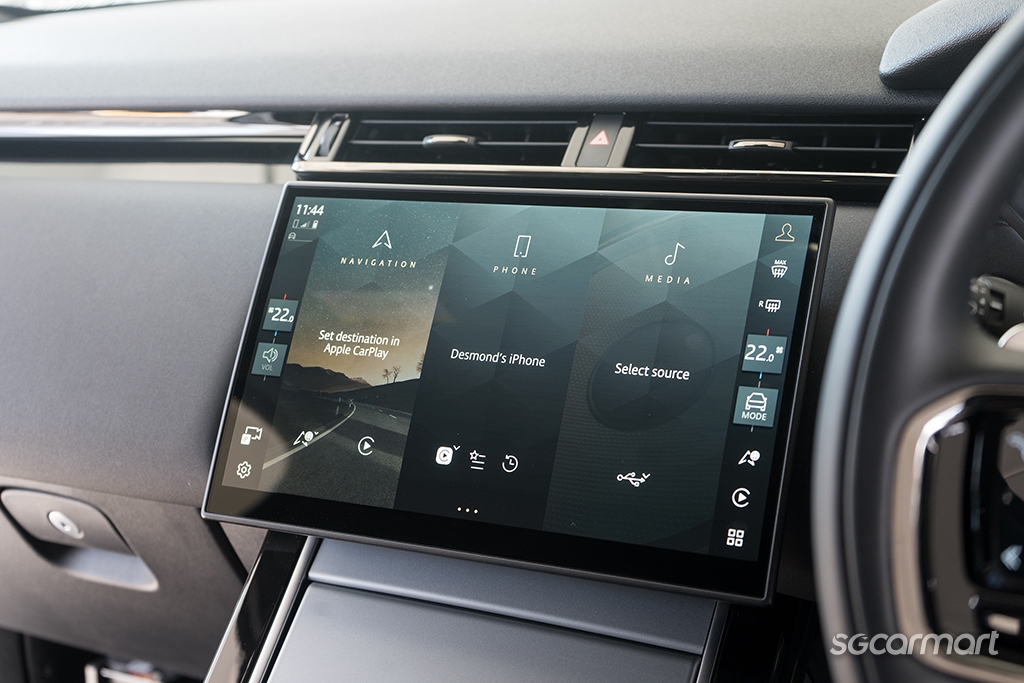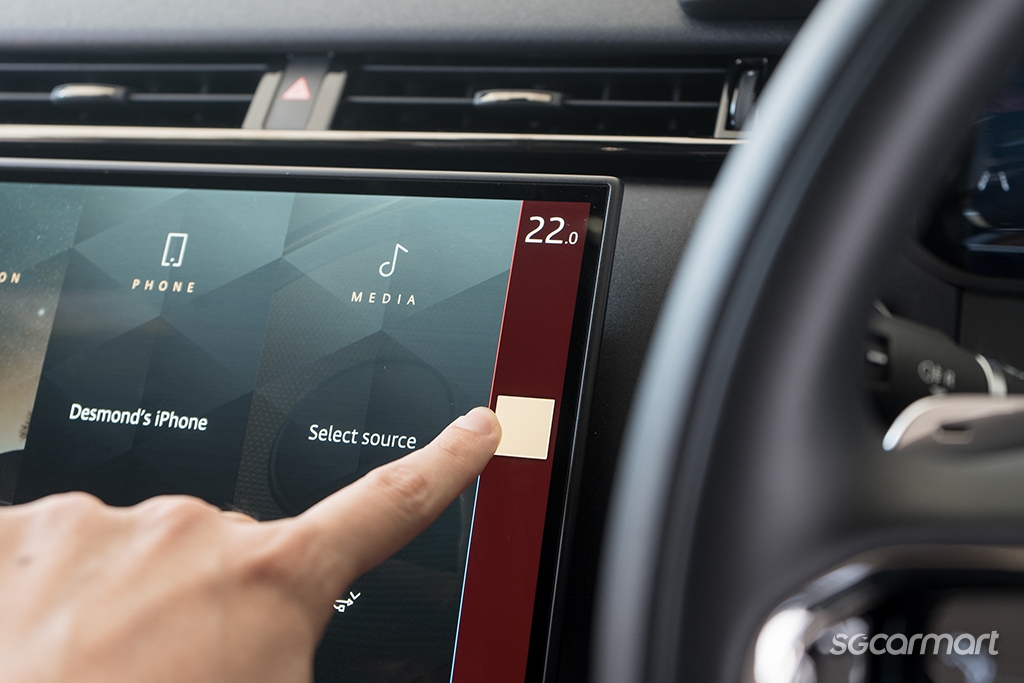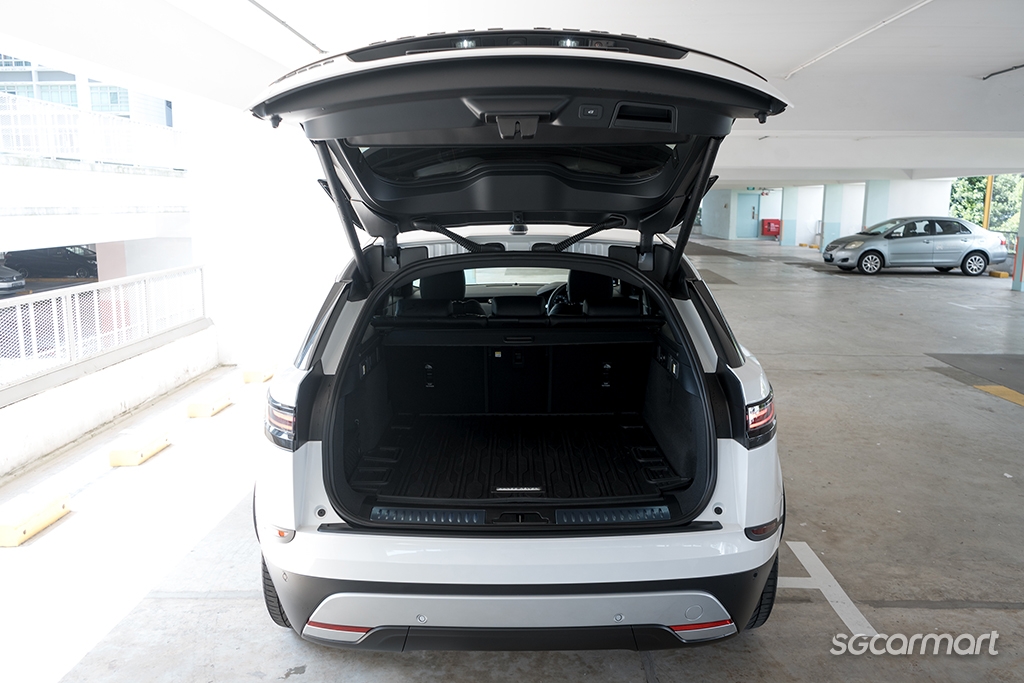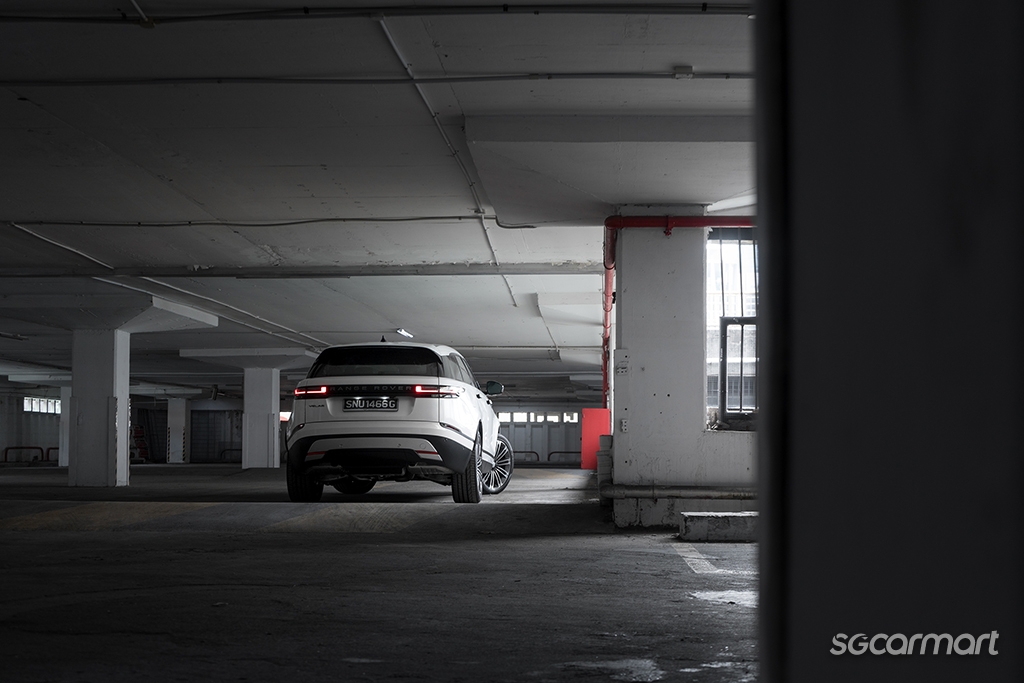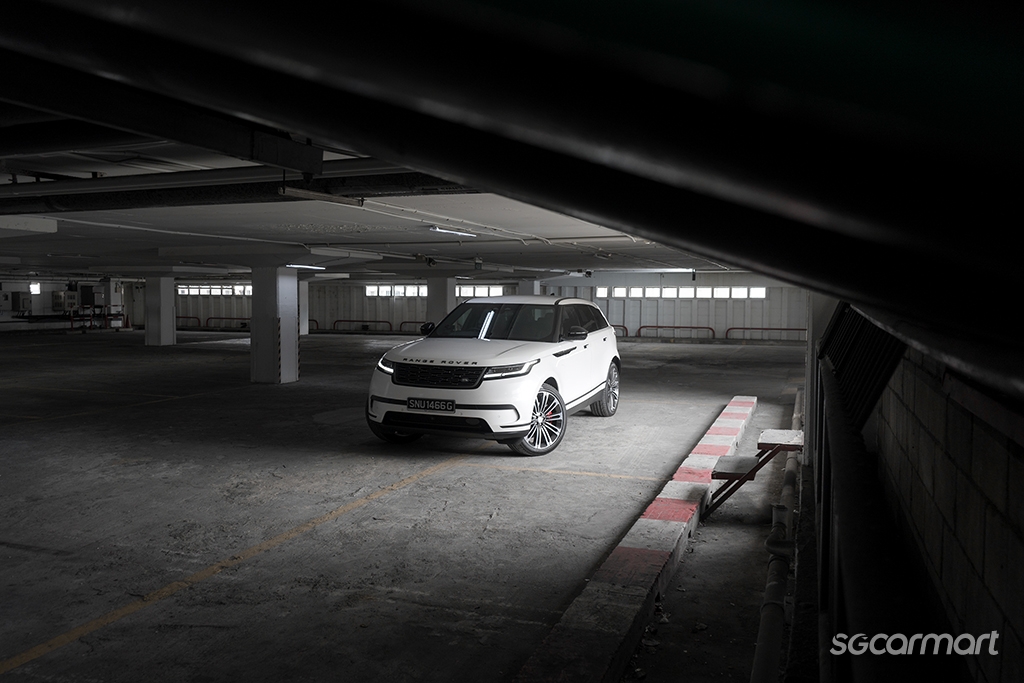Land Rover Range Rover Velar 3.0 Facelift Review
08 Jan 2025|10,320 views
Facelift (What's New)
Now powered by a 3.0-litre in-line six engine
Trim options simplified to this one 'S' variant, with higher standard specification
2025 has rolled around.
And with it, a new Velar. Well, not new. Facelifted Velar. Well, not actually, since the facelifted model was introduced in January last year.
So what is this here? This is the MY25 Velar, and with it comes one important change - it now hosts a 3.0-litre engine under the bonnet.
When the facelifted Velar was launched in Singapore, it was powered by a 2.0-litre engine. However, as a result of changing emissions regulations, that engine is no longer offered in our Singapore market.
As such, the sole engine offering now is this - the P400 3.0-litre mild-hybrid engine with 394bhp and 550Nm of torque.
It's a gutsy engine, with plenty of available shove when you need it. The in-line six also does make quite a pleasing noise, if admittedly quite muted. That said, there is still a detectable gap in throttle response, though its nowhere as bad as I remembered from older Ingenium engines.
Drive smoothly, though, and the Velar is delightful. Air suspension comes as standard, so the ride quality is excellent. Body movements are kept in check pretty well, and only on the harshest bumps that the car's two tonne kerb weight comes to bear.
With this 2025 update, the Velar model offering has been streamlined to just this one 'S' variant.
In addition to air suspension, standard equipment for Singapore include the Meridian sound system, 3D Surround Camera, 22-inch wheels, all previously options only standard on the top-of-the-line Dynamic HSE variant.
Inside the car, the cabin feels polished and premium. I do like the sleekness and simpleness of the cabin's design - unlike some manufacturers, here there seems to be a 'less-is-more' philosophy.
The sleek Pivi Pro infotainment system now sees the air-con controls housed within the screen - you can adjust the temperature simply by sliding upwards/downwards
In the centre console, the previous two-screen setup has now been streamlined down to a single 11.4-inch screen. The Pivi Pro system looks good and is quite intuitive to operate.
When it comes to air-con controls, I actually really liked the old air-con push-pull dials in prior Range Rovers (I found them incredibly intuitive to operate), so the new on-screen air-con controls are less satisfying to operate. Still, at least it is immediately on the main screen, unlike some other brands where you have to enter a separate menu to adjust the temperature.
The newly cleaned up centre console means that the only thing now housed beneath the infotainment screen is the gear selector. Ironically, I think it looks slightly out of place there, disrupting the otherwise cleanness of the surface. I also don't love where the engine start/stop button is placed - it's a little bit hard to reach.
The Velar also functions reasonably well as a family car. The rear seats are not the most spacious, but this is compensated for by a huge (for its segment) 748-litre boot.
Here's an interesting point of comparison: When the facelifted Velar was introduced last year, the top-of-the-line Dynamic HSE variant was asking $361,888 before COE, while the then-base S variant retailed for $298,888 without COE.
This new S variant gets more performance thanks to larger engine, as well as a higher standard equipment package, with a $318,888 price tag (without COE). The only real 'downside' is the higher road tax and poorer fuel consumption. (It is a little ironic that the larger capacity, less fuel-efficient engine is the 'cleaner' option, but given that the previous 2.0-litre engine is almost a decade old, this isn't surprising.)
In the context of more mainstream (and more affordable) choices like the BMW X3 and Mercedes-Benz GLC-Class, the Velar has always been the more premium, left-field alternative. It certainly stands out for its cool styling and elevated cabin, and this updated model continues to impress on that front.
And ultimately, that is the Velar's calling card. Sure, it might have stellar off-road capability (that no Singaporean driver will use), but where the Velar really sets itself apart from other compact SUVs is its Range Rover flavour and "wow" factor. But you do pay the premium for it.
Here are other options in the premium compact SUV segment to consider:
The BMW X3 is a well-mannered SUV that appeals to keener drivers
The Lexus NX comes with a sleek new infotainment screen, and a linear 2.4-litre engine
Facelift (What's New)
Now powered by a 3.0-litre in-line six engine
Trim options simplified to this one 'S' variant, with higher standard specification
2025 has rolled around.
And with it, a new Velar. Well, not new. Facelifted Velar. Well, not actually, since the facelifted model was introduced in January last year.
So what is this here? This is the MY25 Velar, and with it comes one important change - it now hosts a 3.0-litre engine under the bonnet.
When the facelifted Velar was launched in Singapore, it was powered by a 2.0-litre engine. However, as a result of changing emissions regulations, that engine is no longer offered in our Singapore market.
As such, the sole engine offering now is this - the P400 3.0-litre mild-hybrid engine with 394bhp and 550Nm of torque.
It's a gutsy engine, with plenty of available shove when you need it. The in-line six also does make quite a pleasing noise, if admittedly quite muted. That said, there is still a detectable gap in throttle response, though its nowhere as bad as I remembered from older Ingenium engines.
Drive smoothly, though, and the Velar is delightful. Air suspension comes as standard, so the ride quality is excellent. Body movements are kept in check pretty well, and only on the harshest bumps that the car's two tonne kerb weight comes to bear.
With this 2025 update, the Velar model offering has been streamlined to just this one 'S' variant.
In addition to air suspension, standard equipment for Singapore include the Meridian sound system, 3D Surround Camera, 22-inch wheels, all previously options only standard on the top-of-the-line Dynamic HSE variant.
Inside the car, the cabin feels polished and premium. I do like the sleekness and simpleness of the cabin's design - unlike some manufacturers, here there seems to be a 'less-is-more' philosophy.
The sleek Pivi Pro infotainment system now sees the air-con controls housed within the screen - you can adjust the temperature simply by sliding upwards/downwards
In the centre console, the previous two-screen setup has now been streamlined down to a single 11.4-inch screen. The Pivi Pro system looks good and is quite intuitive to operate.
When it comes to air-con controls, I actually really liked the old air-con push-pull dials in prior Range Rovers (I found them incredibly intuitive to operate), so the new on-screen air-con controls are less satisfying to operate. Still, at least it is immediately on the main screen, unlike some other brands where you have to enter a separate menu to adjust the temperature.
The newly cleaned up centre console means that the only thing now housed beneath the infotainment screen is the gear selector. Ironically, I think it looks slightly out of place there, disrupting the otherwise cleanness of the surface. I also don't love where the engine start/stop button is placed - it's a little bit hard to reach.
The Velar also functions reasonably well as a family car. The rear seats are not the most spacious, but this is compensated for by a huge (for its segment) 748-litre boot.
Here's an interesting point of comparison: When the facelifted Velar was introduced last year, the top-of-the-line Dynamic HSE variant was asking $361,888 before COE, while the then-base S variant retailed for $298,888 without COE.
This new S variant gets more performance thanks to larger engine, as well as a higher standard equipment package, with a $318,888 price tag (without COE). The only real 'downside' is the higher road tax and poorer fuel consumption. (It is a little ironic that the larger capacity, less fuel-efficient engine is the 'cleaner' option, but given that the previous 2.0-litre engine is almost a decade old, this isn't surprising.)
In the context of more mainstream (and more affordable) choices like the BMW X3 and Mercedes-Benz GLC-Class, the Velar has always been the more premium, left-field alternative. It certainly stands out for its cool styling and elevated cabin, and this updated model continues to impress on that front.
And ultimately, that is the Velar's calling card. Sure, it might have stellar off-road capability (that no Singaporean driver will use), but where the Velar really sets itself apart from other compact SUVs is its Range Rover flavour and "wow" factor. But you do pay the premium for it.
Here are other options in the premium compact SUV segment to consider:
The BMW X3 is a well-mannered SUV that appeals to keener drivers
The Lexus NX comes with a sleek new infotainment screen, and a linear 2.4-litre engine
Car Information
Land Rover Range Rover Velar Mild Hybrid 3.0 S (A)
$316,888 (w/o COE)
CAT B|Petrol-Electric|9.9km/L
Horsepower
294kW (394 bhp)
Torque
550 Nm
Acceleration
5.5sec (0-100km /hr)
Promotion
This festive season, experience the Range Rover Velar at a truly compelling S$398,888 (inclusive of COE).
Read moreThank You For Your Subscription.
- Engine Update
- Sleek Forms
- Conclusion







































